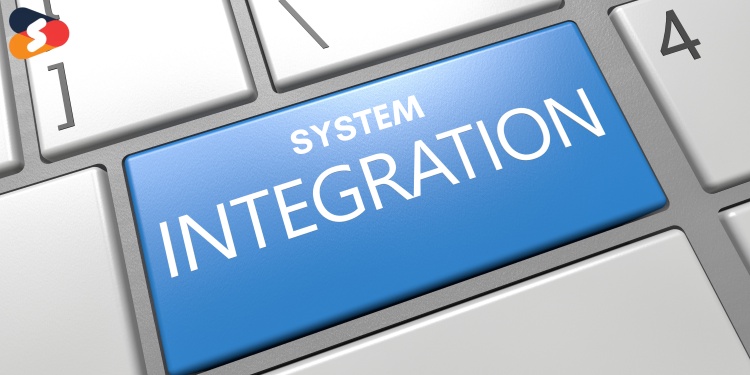Many Companies are using system integration to increase efficiency, productivity, and quality in their operations. The objective is usually to get the company's various IT systems to communicate with each other in the background so as to avoid the time and effort spent manually sharing information with other departments/components of the organization including upper management. The organization will see an increase in information flow speed and lower operational costs through system integration.
System Integration is the process of combining multiple subsystems into one larger system. This allows the subsystems and their functions to work together. System integration creates a symbiosis that allows the main system the ability to perform the essential functions required by the Company.
Types of system integration:
After we have explained the reasons why system integration is important, let's look at the various types of system integration you can use.
Integration of legacy systems
To avoid disruption to their day-today operations, many organizations still use legacy systems for core business functions. This problem can be solved by businesses implementing legacy system integration. This allows for the modernization and integration of legacy systems, allowing for seamless communication with newer technologies.
Enterprise application integration (EAI)
Businesses tend to integrate more enterprise applications when they grow. This helps to streamline their back-office and front-end processes. Many disparate applications are created that don't share any common point of convergence or store large amounts of data in their own separate databases. EAI unites these subsystems and allows for the exchange of real-time data between applications.
Data integration
Many companies have data stored from many different sources. Data integration, as the name implies, allows you to collect data from many different sources and combine them into one central point for interactive reporting.
Integration business-to-business
B2B Integration is the automation and coordination of business communications and processes between multiple companies. Through business process automation, this integration allows these companies to trade more effectively with their business partners and suppliers.
Electronic document interchange (EDI).
Electronic data interchange (EDI), is an intercompany exchange of business documents using a standard format. Alternatively, EDI could be described as the standard electronic format companies use to replace paper-based documents like invoices and purchase orders. Companies can save time and avoid costly mistakes by automating paper-based transactions.
Method of system integration
There are many methods to achieve system integration. Let's take a look at each one in more detail.
Integration from point-to-point
Point-to-point Integration, as the name implies, is a connection between two components of a system. It is not considered system integration because it does not have the same complexity as "true" integration. These types of integrations typically only deal with one business function at once and don't require complex business logic. Point-to-point systems can become difficult to manage as more systems are added. New connections will need to be made.
Star integration
Star integration, also known as the spaghetti technique, connects each subsystem to other subsystems using point-to-point connections. This type of integration offers greater functionality. The complexity of managing these integrations increases as integrated systems become more complex. Star integration is a good choice when there aren’t too many subsystems within a business environment.
Integration Hub-and-spoke
The hub-and-spoke integration model allows every system to be connected directly to a central hub, which mediates requests and separates senders and receivers of data. Because of its unique architecture hub-and-spoke Integration greatly simplifies security and sustainability in a business environment.
Vertical integration
Vertical integration connects the subsystems by creating a functional silo. The basic function is at the bottom, with more complicated functions as you move upwards. Vertical integration is an easy method that only involves a small number of systems. It is, however, quite rigid and can become increasingly difficult to manage over time due to the fact that every new functionality needs its own functional "silo". Vertical integration is best suited for creating simple integrations that only address a single function.
Horizontal integration
Horizontal integration is a method of facilitating communication between subsystems, as opposed to vertical integration. This type of integration can be achieved using a single specialized subsystem called an enterprise service bus (ESB). It acts as a common user interface layer and connects to all subsystems.
Vertical integration is possible because subsystems are connected indirectly to the main system rather than directly. The system will cost less to build and requires less effort.
Common data format integration
A new data language can be used to integrate common data formats. This language allows all subsystems to exchange data and process it in a common format. This integration eliminates the need for multiple adapters within a system to support every subsystem.
This type of integration has the primary benefit that all subsystems can communicate and work independently. This integration has one drawback: it requires extensive coding skills and is quite complex.
Advantages of system integration:
System integration has many benefits.
- System integration has the obvious advantage of streamlining and aggregating all data. This simplifies data retrieval and processing across subsystems.
- System integration improves data accessibility and eliminates the need for data to be manually synchronized across subsystems.
- System integration reduces repetitive manual data entry and boosts efficiency.
- System integration enables data storage on a single, centralized system. This eliminates the need to set up multiple storage areas for the same data and reduces costs.
Conclusion:
Both MSPs, as well as internal IT teams, find system integrations a boon because they streamline critical IT processes and boost efficiency, allowing technicians to concentrate on revenue-generating activities.
Shiv Technolabs has quality analytics and testing team ensures that Microsoft Dynamics' development processes are in compliance with requirements. We also make sure that they are executed in a transparent and effective manner. We will assist you and your company in achieving your system integration goals by identifying and eliminating performance gaps through thorough audits.
Related Article:
How Custom Software Development Beneficial For Your Business?


No comments yet